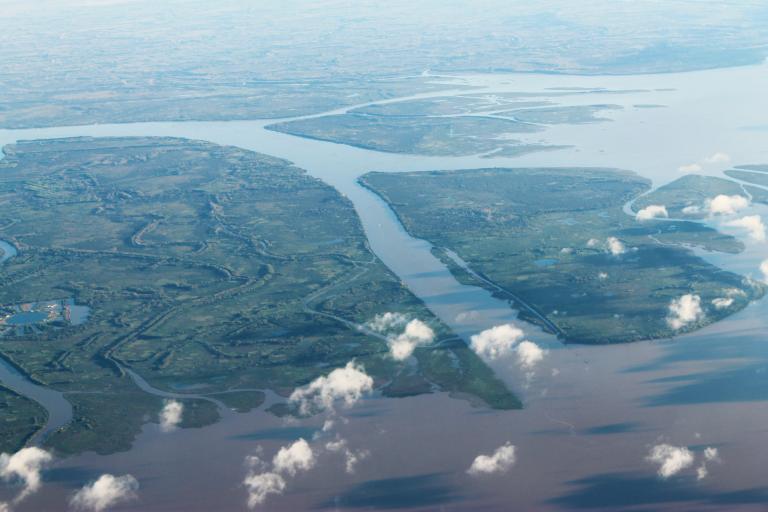Improving hydrological services in Southeast Asia and South America
In the first months of 2024, workshops on water resources management were carried out in Cambodia and Lao PDR, while a pilot project in the framework of the Hydrological Status and Outlook System (HydroSOS) was launched within the Huallaga and Uruguay river basins in South America.

Improving water resource management in Cambodia and Lao PDR
WMO and the Korea Institute of Civil Engineering and Building Technology (KICT) have joined forces under the Climate Risk and Early Warning Systems (CREWS) banner to empower National Meteorological and Hydrological Services (NMHSs) in Cambodia and Lao PDR to better manage water resources through the Dynamic Water Resources Assessment Tool (DWAT).
In March 2024, the cities of Vientiane and Phnom Penh hosted national workshops aimed at training NMHSs staff and Mekong River Commission (MRC) members on DWAT's application.
Diversity was at the heart of these workshops, with a significant presence of women participants (45% in Lao PDR and 40% in Cambodia), reflecting the countries commitment to inclusivity and gender balance. The sessions led to recommendations on tailored trainings, extended workshop durations, and enhanced data management support.
The action plan for the coming months foresees the application of DWAT in pilot basins and organizing follow-up workshops to refine and expand its application.
The DWAT workshops have not only showcased the potential of freely available tools but also highlighted the power of collective action and knowledge sharing. This is the first step in a long journey towards sustainability and resilience that NMHSs, KICT, WMO, and CREWS are committed to following together.
HydroSOS supports hydrological forecasting in South America
WMO and the Brazil Institute of Hydrological Research (IPH) worked together with the NMHSs of Argentina, Brazil, Peru, and Uruguay on a pilot project under the Hydrological Status and Outlook System (HydroSOS) initiative. A new approach to Subseasonal to Seasonal (S2S) forecasting was tested by applying the MGB hydrological model within the Huallaga and Uruguay river basins in South America. The Huallaga River has its headwaters in the Andes Mountain range in Peru and is part of the Amazon Basin. The Uruguay River Basin is shared by Brazil and Uruguay, and it’s part of the La Plata River Basin. This selection seeks to encompass the great geographical diversity that exists in South America.
Utilizing diverse datasets and precipitation and climate data, the project calibrated and verified the model, laying a solid foundation for accurate forecasts. For its forecasting methodology, the project relied in the Ensemble Streamflow Prediction (ESP) technique. This method not only offers a glance into the future with its 90-day forecast horizon but does so with flexibility and cost-efficiency. By categorizing hydrological conditions into precise percentiles and categories suggested by the HydroSOS Technical Development Team, a hydrological outlook product for both basins was developed.
Results showed modest skill in forecasting for the Huallaga Basin, suggesting a need for alternative methods due to fewer observations and unpredictable terrain. Conversely, forecasts for the Uruguay Basin demonstrated enhanced predictability, with the potential for further refinement through additional climate data models.
Knowledge transfer was facilitated through comprehensive training sessions on the MGB model and forecasting theories, utilizing a MOODLE platform. These sessions, designed for NMHSs staff, aimed to build a community of experts ready to address future challenges in hydrological forecasting under the HydroSOS framework.
This pilot project is a stepping stone towards better equipping NMHSs to predict and prepare for hydrological changes with more confidence and precision.
- Region:
- Region II: Asia ,
- Region III: South America









